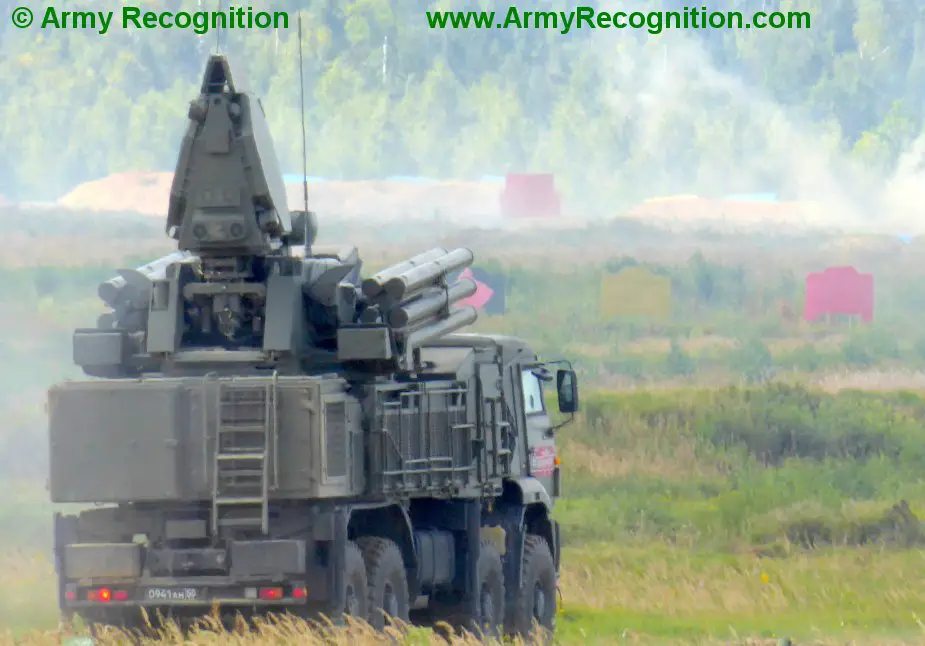The Russian Ministry of Defense has considerably complicated exams for antiaircraft units since 2019 due to arming regiments with S-300 and S-400 weapons and Pantsir-S close-range systems. Previously, each weapon fired at its own targets. Now they will act jointly to increase effectiveness. Control and target distribution systems built by the netcentric principle will synchronize the fire, the Izvestia daily writes.

Pantsir-S demonstrated at Kubinka during Armya-2018 (Picture source: Army Recognition)
Netcentric principle means the creation of central networks for combat actions. The army command, each unit, tank and soldier are united into a single information network to exchange information and obtain data on the adversary which increases the combat capability of the army in general and of each component. All arms of troops, communication and reconnaissance means, including military satellites and drones comprise a single system of constant data exchange. Thus, the combat units in adversary territory receive information on the movement of adversary troops and the command has a real picture of combat actions.
The Defense Ministry told the newspaper that the 185th combat training center of the Aerospace Forces held experimental tactical drills at Ashuluk range in Astrakhan region in 2018. United S-400 Triumph and Pantsir-S had to repel two massive strikes. The possibility to unite various-class and range systems was tested.
S-400 and Pantsir-S command posts were linked by an automatic control system built by the netcentric principle. The situation was complicated to the maximum. The air raid on air defense simultaneously engaged targets imitating hypersonic and supersonic weapons, airplanes, helicopters, drones and cruise missiles. Various air defense weapons interacted in the fight against various targets and the commanders controlled various arms and means. The automatic system distributed targets between Pantsir-S and S-400. The latter destroyed targets imitating high-speed ballistic missiles. Pantsir-S simultaneously fired at low-altitude and small targets imitating cruise missiles and drones. The exercise was recognized as successful and the drills were included into the exams of air defense units and formations which take place twice a year at the end of the winter and summer training periods.
An air defense officer has to prudently control his force and down targets, as well as to interact with other units, former Air Force Deputy Commander Lieutenant-General Aitech Bizhev said. "Our hardware has an edge against attack weapons. But operators have to be properly trained," he said. "Therefore, an airstrike from dangerous directions is modelled at exercises and units have to destroy adversary aircraft," he said.
The idea to complement S-300 and S-400 with Pantsir-S originated in the Syrian combat. "Previously drills were held to train fire against one type of threats: aviation and cruise missiles," expert Anton Lavrov said. "It is much more difficult to repel an attack by various types of craft. The weapons have to fire at targets flying at various altitudes and from various directions. It demands skills to operate by the necessary algorithms. The command post has to correctly distinguish the targets and properly issues commands to destroy them," he said.
Various-class weapons can simultaneously destroy various threats. S-300 and S-400 can fight adversary aviation and cruise missiles. Pantsir-S can down guided munitions and drones, the Izvestia said.
© Copyright 2019 TASS / Army Recognition Group SPRL. All rights reserved. This material may not be published, broadcast, rewritten or redistributed.














